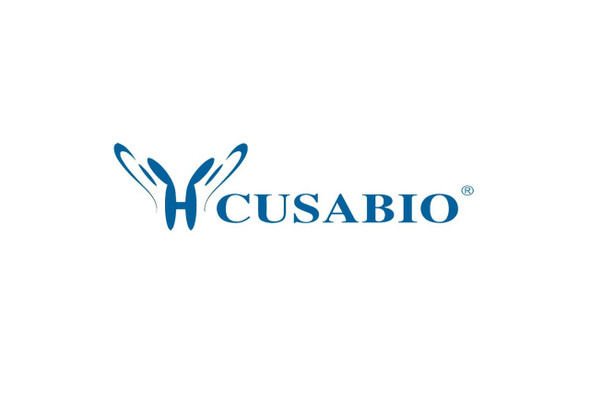Cusabio Influenza A virus Recombinants
Recombinant Influenza A virus Non-structural protein 1 (NS) | CSB-EP391362ILO
- SKU:
- CSB-EP391362ILO
- Availability:
- 3 - 7 Working Days
Description
Recombinant Influenza A virus Non-structural protein 1 (NS) | CSB-EP391362ILO | Cusabio
Alternative Name(s): NS1A
Gene Names: NS
Research Areas: Microbiology
Organism: Influenza A virus(strain A/Malaysia:Malaya/302/1954 H1N1)
AA Sequence: MDPNTVSSFQVDCFLWHVRKQVADQELGDAPFLDRLRRDQKSLRGRGSTLGLNIETATRVGKQIVERILKEESDEALKMTMASAPASRYLTDMTIEEMSRDWFMLMPKQKVAGPLCIRMDQAIMDKNIILKANFSVIFDRLETLILLRAFTEEGAIVGEISPLPSLPGHTNEDVKNAIGVLIGGLEWNDNTVRVSKTLQRFAWRSSNENGRPPLTPKQKRKMARTIRSEVRRNKMAD
Source: E.coli
Tag Info: N-terminal 10xHis-tagged and C-terminal Myc-tagged
Expression Region: 1-237aa
Sequence Info: Full Length
MW: 34.4 kDa
Purity: Greater than 85% as determined by SDS-PAGE.
Relevance: Prevents the establishment of the cellular antiviral state by inhibiting TRIM25-mediated DDX58 ubiquitination, which normally triggers the antiviral transduction signal that leads to the activation of type I IFN genes by transcription factors IRF3 and IRF7. Prevents human EIF2AK2/PKR activation, either by binding double-strand RNA, or by interacting directly with EIF2AK2/PKR. This function may be important at the very beginning of the infection, when NS1 is mainly present in the cytoplasm. Also binds poly and U6 snRNA. Inhibits post-transcriptional processing of cellular pre-mRNA, by binding and inhibiting two cellular proteins that are required for the 3'-end processing of cellular pre-mRNAs: the 30 kDa cleavage and polyadenylation specificity factor/CPSF4 and the poly(A)-binding protein 2/PABPN1. In turn, unprocessed 3' end pre-mRNAs accumulate in the host nucleus and are no longer exported to the cytoplasm. Cellular protein synthesis is thereby shut off very early after virus infection. Viral protein synthesis is not affected by the inhibition of the cellular 3' end processing machinery because the poly(A) tails of viral mRNAs are produced by the viral polymerase through a stuttering mechanism.
Reference: "The NIAID influenza genome sequencing project." Ghedin E., Spiro D., Miller N., Zaborsky J., Feldblyum T., Subbu V., Shumway M., Sparenborg J., Groveman L., Halpin R., Sitz J., Koo H., Salzberg S.L., Webster R.G., Hoffmann E., Krauss S., Naeve C., Bao Y. Tatusova T. Submitted (MAR-2007)
Storage: The shelf life is related to many factors, storage state, buffer ingredients, storage temperature and the stability of the protein itself. Generally, the shelf life of liquid form is 6 months at -20?/-80?. The shelf life of lyophilized form is 12 months at -20?/-80?.
Notes: Repeated freezing and thawing is not recommended. Store working aliquots at 4? for up to one week.
Function:
Involvement in disease:
Subcellular Location:
Protein Families:
Tissue Specificity:
Paythway:
Form: Liquid or Lyophilized powder
Buffer: If the delivery form is liquid, the default storage buffer is Tris/PBS-based buffer, 5%-50% glycerol. If the delivery form is lyophilized powder, the buffer before lyophilization is Tris/PBS-based buffer, 6% Trehalose, pH 8.0.
Reconstitution: We recommend that this vial be briefly centrifuged prior to opening to bring the contents to the bottom. Please reconstitute protein in deionized sterile water to a concentration of 0.1-1.0 mg/mL.We recommend to add 5-50% of glycerol (final concentration) and aliquot for long-term storage at -20?/-80?. Our default final concentration of glycerol is 50%. Customers could use it as reference.
Uniprot ID: A4K149
HGNC Database Link: N/A
UniGene Database Link: N/A
KEGG Database Link: N/A
STRING Database Link: N/A
OMIM Database Link: N/A






